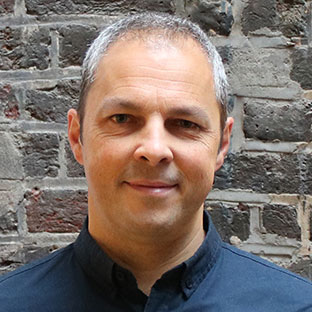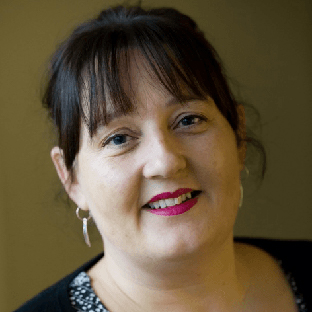The Covid-19 pandemic is shining a light on the relative resilience of nation states: from the numbers of available ventilators, to food supplies, to the ability to provide monetary stimulus to keep the economy afloat.
It seems though that one of the litmus tests of this crisis is going to be the resilience found in local communities and the ability of society and state to work in collaboration.
It is already a matter of great national pride that in a matter of days more than 700,000 people registered to become NHS Volunteer Responders. Together with the moving doorstep clapping to celebrate the work of NHS staff, we see once again the huge regard that there is in this country for state-run health provision.
There has been far less celebration of more than 2500 hyper-local mutual aid groups that have quickly established to organise support for the most vulnerable on a street-by-street basis with volunteer street organisers doing leaflet drops, setting up WhatsApp groups and identifying support needs on a neighbour-to-neighbour basis. In our own neighbourhood of Levenshulme, in inner city Manchester, over 800 people joined the Levy Corona Helpers Facebook group within a week and 26 street organisers had mobilised nearly 200 offers of – and requests for – support before the NHS had even launched its national initiative.
The principles of mutual aid couldn’t be further removed from a state-led intervention. Covid-19 Mutual Aid UK defines itself as “a group of volunteers aiming to support the network of local community groups organising to support people through the corona-virus pandemic. We are not in charge of this network and have no say over what local groups do.” It discourages local groups from working with the police, councils, NGOs and government bodies. Such explicit statements have meant that many local groups have been largely ignored by any official response and legitimate concerns have been raised about their approaches to social distancing and other safe-guarding issues. Jez Hall – another local FRSA – has written this excellent blog about how mutual aid groups can mitigate such criticisms.
Locally, the Corona Helpers group set out to facilitate and mobilise neighbours helping and supporting each other, rather than creating a ‘helper and helped’ division. The simple principles of mutual aid, although with a commitment to working with local structures, has been effective thus far.
Sitting between NHS Volunteer Responders and the Mutual Aid movement is the established voluntary and community sector. This itself is far from a homogenous sector: from the huge national charities and national umbrella organisations that have spent recent weeks lobbying government on behalf of the charity sector, to the local councils of voluntary service and community organisations who have simultaneously transformed service provision while facing financial ruin.
At our local community centre, Levenshulme Inspire, the once bustling café has been transformed to provide 300 take-away meals each week for older and vulnerable people who are well-known to staff and volunteers thanks to a Lottery-funded ‘age-friendly Levenshulme’ project that has been running for 5 years. But with just 4 weeks’ of reserves there remains a race against time for local fundraising and government support to come though if they are going to keep the lights on and pay the majority of staff who have taken furlough.
Relationships between voluntary, community and faith-based organisations and the mutual aid street organisers in Levenshulme are strong. The latter are providing the delivery volunteers to distribute the freshly-cooked meals three times each week, with additional food bags on a Friday supplied by a local food bank initiative called The Bread & Butter Thing. Weekly co-ordination meetings are problem-solving local challenges and identifying gaps in provision and further ideas for support and assistance. Everyone is doing this in their own time, and around their existing full-time jobs.
What remains to be seen is how the “army” of NHS Volunteers is going to fit in. In principle, the mutual aid groups are dealing with the simple, one-off requests for help, just as any neighbour would in normal times. Where people need more regular support or can offer more frequent assistance, street organisers are escalating people to the voluntary and community organisations who are better equipped to do basic safeguarding and other ID checking and training. What is needed is a mechanism by which those who are particularly ill – or those in the ‘shielded’ group – are picked up by the NHS Volunteer Responders. Such a ‘three-tier’ system is ready to fall into place, if the public authorities are prepared to engage - and from what we have seen so far, there is no shortage of people who will be needing their combined assistance.
The signs haven’t been good so far. Mutual aid is perceived by public agencies as some kind of ungovernable social movement which can’t be contained or managed, or even funded, and so can’t be trusted or brought to heel. After a decade of austerity, the voluntary and community sector is on its knees and lacks the capacity to do much more than transition its own services, let along engage with the emerging bureaucracies of the public sector effort. And to the external eye, the local public sector response has so far seemed fragmented: there are GPs, community nurses, care workers, social workers and a whole raft of council and NHS employees with ‘health’ in their job titles, but little clarity as to how they work together or combine their efforts with the community and voluntary activities that are scaling up. These are still early days.
The Coronavirus pandemic is transforming things fast and – even if only in one small corner of Manchester, which, like many, had experienced deep divisions in the community through Brexit – there is a significant opportunity waiting to be seized. Community resilience cannot depend on do-gooding volunteers any more than it can large-scale state intervention. There has to be some collaborative effort. It is too late now to be crying over the systems we have, we have a significant opportunity put in place right now the systems that we need to avert an even greater crisis and build bridges to the future. We hope that the chance to build a deep, and lasting legacy of greater community cohesion through the development of enduring street level community networks is not lost as the public sector responds to this crisis. The time is ripe for collaboration and trust.


Join the discussion
Comments
Please login to post a comment or reply
Don't have an account? Click here to register.
A great article - thanks. In our part of Cornwall the same three-tier approach you highlight is coming together; hubs of hyper-local volunteers supporting day-to-day activities, a second tier of more specialist support & knowledge and a third tier of support starting to focus on the 'shielded' group. Still not clear how the 700,000 fit in.
While technology and apps have a great role to play in helping to facilitate communication and interaction, there still seem to be two risks. Firstly that some of the emphasis I see on technology risks supplanting rather than enabling relationships - where relationship needs to be at the core of what is done. Secondly that some of the most vulnerable / isolated people are outside of the technologies so rapidly taken up by the mainstream - and therefore risk becoming even more invisible and disempowered.
Would love to hear your thoughts on how the opportunities highlighted in your final paragraph can be turned into reality in the weeks / months ahead.